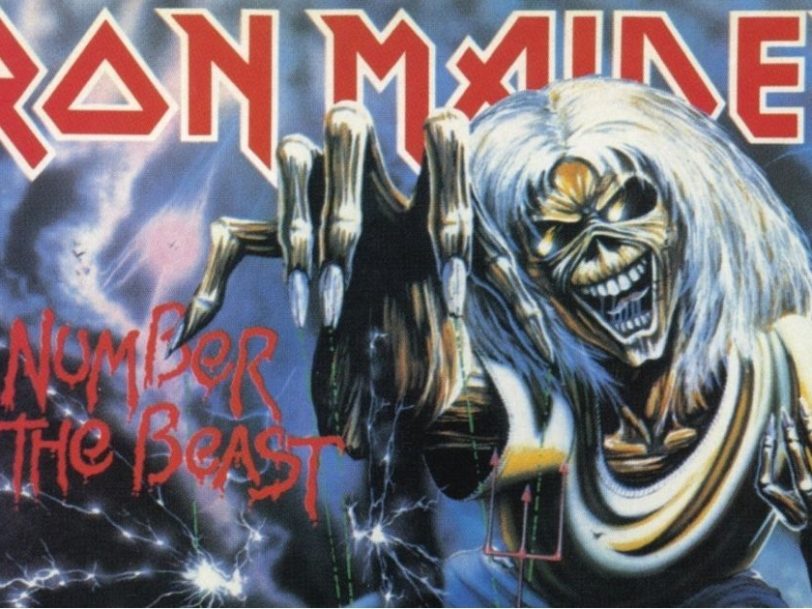Iron Maiden’s third album, The Number Of The Beast, has repeatedly been lauded as one of heavy metal’s benchmark releases. First issued in early 1982, it swept to No.1 in the UK and brokered the band’s international breakthrough, rewarding them with their first US Billboard Top 40 chart placing on the way to moving over 20 million copies worldwide.
Yet, while it’s now regarded as the most pivotal title in Iron Maiden’s canon, The Number Of The Beast’s success was by no means preordained. Prior to its creation, the band had notched up two Top 20 hits, with their self-titled debut album and its follow-up, Killers, but bassist and bandleader Steve Harris was still concerned about the group’s future. Most specifically, he felt frontman Paul Di’Anno lacked the commitment needed to take Maiden to the next level.
Listen to ‘The Number Of The Beast’ here.
“I felt that I might be letting people down”
“We knew that it was a big deal to change our singer, but we also knew that we couldn’t carry on with Paul,” Harris told Classic Rock in 2016. “When he first got involved with the band, Rod [Smallwood, Iron Maiden’s manager] asked me was there any potential problems that might crop up in the future that he should know about. And I said: ‘I’ve got to be honest. There may be a problem with Paul, because sometimes his attitude is a bit weird.’”
Di’Anno’s own lifestyle choices – which by this time included a predilection for brandy and cocaine – also worried his bandmates. In retrospect, however, the singer readily agreed that he wasn’t up to the task at that point in time.
“By the time of Killers the band was getting a bit more technical… and I started losing interest,” Di’Anno reflected. “I felt that I might be letting people down by voicing my doubts, so I said nothing. But then it built up to the point where I was rubbing Steve up the wrong way.”
“Bruce Dickinson was one of the first people I thought of”
Iron Maiden appreciated that replacing Di’Anno could easily have backfired. The brash, 23-year-old East Londoner was highly popular with the band’s ardent fan base, whose unyielding support had helped Maiden emerge as front runners of the New Wave Of British Heavy Metal scene in the early 80s. Yet, even before Di’Anno played his final show with Maiden, in September 1981, Steve Harris had a possible replacement in mind.
“I’d never been much into [NWOBHM contemporaries] Samson, but I’d always thought their singer was good,” he later admitted to Classic Rock. “I thought, Yeah, the bloke’s got a really good voice, and he knows how to work a crowd. I thought he sounded a bit like Deep Purple’s Ian Gillan, actually. When the shit really hit the fan with Paul, he was one of the first people I thought of.”
As it turned out, the feeling was mutual: the singer in question, Bruce Dickinson, already believed that he could be a good fit for Iron Maiden.
“I was looking at Paul, thinking I should be up there”
“Samson only played a few gigs with Maiden on the same bill, but I was acutely aware that they had a big following,” Dickinson told Classic Rock. “I checked them out when Samson were headlining above them at a venue called the Music Machine [now Koko] in London. I got goosebumps watching them. It gave me the same feeling I got as a kid listening to Deep Purple In Rock… I was looking at Paul, thinking I should be up there.”
After an initial meeting with Rod Smallwood at the Reading Festival, followed by a successful try out, Dickinson was installed as the band’s new frontman. He made his live debut with Iron Maiden in Italy, at the Palasport Arena, in Bologna, on 26 October 1981, and then held his nerve at a big UK show at London’s Rainbow Theatre. Yet, while Dickinson’s commanding stage presence immediately made a difference, the band hadn’t yet finalised the material that would make up The Number Of The Beast.
“Pressure helps to make you come up with the goods”
“There was a lot of pressure,” Steve Harris recalled. “The first album was like a ‘best of’ of the songs we’d been playing during the band’s first four years. The second album was mainly early stuff as well, apart from maybe four songs. When we got to the third album, we had nothing. We had to write from scratch. Pressure helps to make you come up with the goods.”
It certainly did where The Number Of The Beast was concerned, with not only Harris, but also the band’s new recruits, Dickinson and guitarist Adrian Smith, coming up with impressive new ideas. These soon translated into tough yet highly melodic hard-rock anthems such as The Prisoner and 22 Acacia Avenue.




